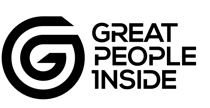Strategic HR Starts with Speaking the CFO’s Language
This is The Real Reason HR Struggles to Win Executive Buy-In.
As a senior HR leader, you instinctively understand the impact of your initiatives – improved morale, reduced turnover, and a more skilled workforce. These qualitative outcomes are often difficult to translate into tangible business outcomes, and the kind that resonates with the C-suite can often feel like an uphill battle.
You’re not alone. Industry reports consistently highlight this challenge: demonstrating the direct link between HR metrics and the bottom line.
Think about it: you champion a crucial leadership development program. You see the engagement, the positive feedback. But, when it comes time to demonstrate ROI, do you have the statistical data that truly tells the story of its business impact?
Here’s the strategic shift more HR leaders are embracing: moving beyond anecdotal evidence to quantifiable impact. The key lies in understanding your people strategically and leveraging tools that provide objective insights into the skills and potential directly relevant to your organisation’s success.
Imagine being able to pinpoint the precise leadership competencies relevant to your organisation that directly correlate with team productivity before launching that development program.
This level of insight enables more targeted initiatives and, crucially, allows you to measure the impact on key business drivers.
Connecting HR to the Bottom Line: A Practical Approach
Speaking the language of finance doesn’t need to be complex. It’s about clearly demonstrating how your HR programs influence the metrics the executive team cares about. Consider this simplified framework:
- Identify the Business Challenge: What specific problem is your initiative aiming to solve (e.g., slow project completion times, high attrition in a key department)?
- Define Measurable Goals: What tangible improvements are you aiming for (e.g., reduce project timelines by X%, decrease turnover by Y%)?
- Track Key Metrics: Implement systems to consistently measure the relevant data points before and after your initiative.
- Quantify the Impact: Translate the improved metrics into financial terms. For example, A reduction in project completion time might mean increased revenue potential or resource savings. Another example, a lower turnover often results in reduced recruitment and onboarding costs.
- Calculate the ROI (Simple Formula): ROI = (Benefit−Cost) ÷ Cost × 100
By focusing on these steps, you move from simply describing “better leaders” to demonstrating measurable outcomes through improved efficiency or reduced costs. This data-driven approach elevates HR from an operational function to a strategic partner directly contributing to organisational growth.
The ability to articulate HR’s financial impact isn’t just about justifying budgets; it’s about securing future investment and solidifying HR’s role as a vital driver of business success. The future of HR leadership demands that we validate our people strategy with demonstrable ROI.
Ready to explore tools that can help you quantify your HR impact? Discover your strategic HR advantage here: www.greatpeopleinside.com.au
